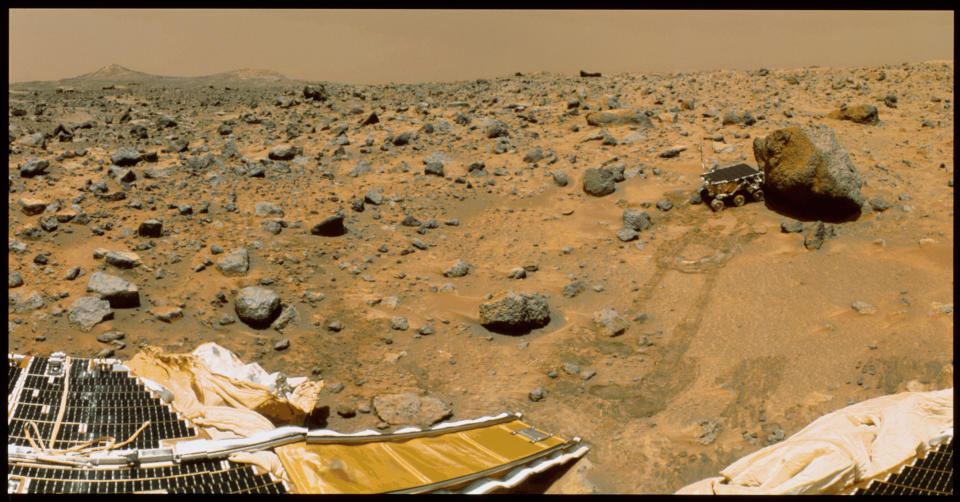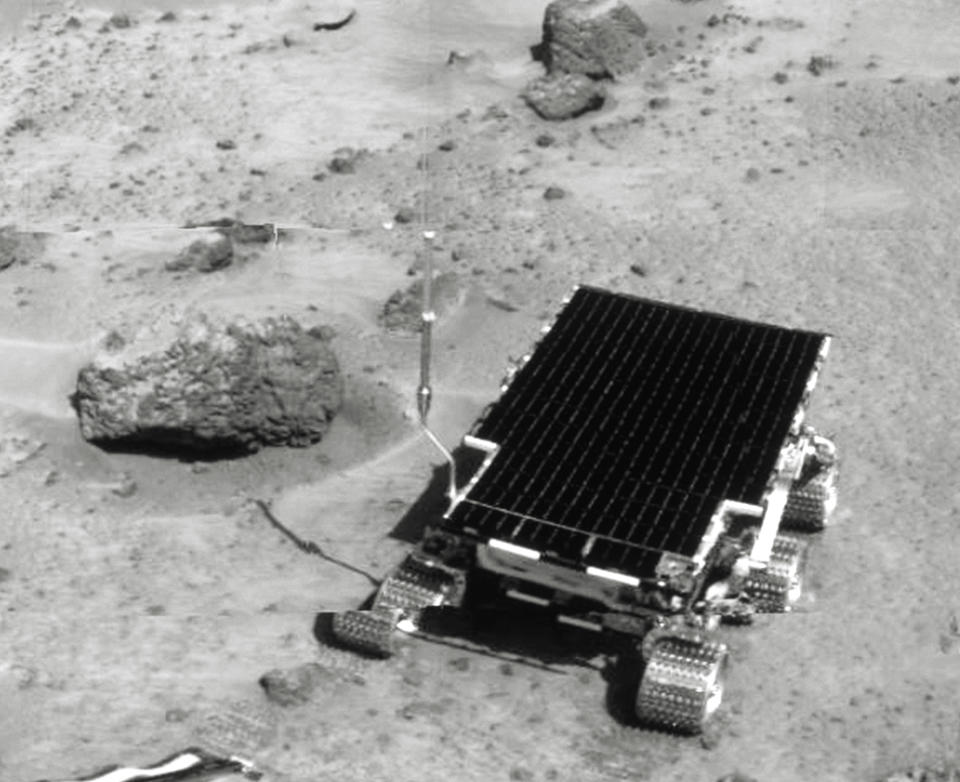NASA’s first Mars rover ‘actually stumbled on ancient sea on the Red Planet’ 20 years ago

In the distant past, Mars was a very different place from the cold, dry world we see now – and NASA’s very first Mars mission may have found startling evidence of this.
The Pathfinder lander may have stumbled on evidence of an ancient sea in 1997 – and it could prove that Mars was once able to support life.
The Pathfinder carried NASA’s very first Mars rover, the Sojourner, which captured images of the Martian surface.
But for years, scientists debated whether Sojourner captured evidence of catastrophic floods on the surface.
New imagery shows that the area could not have formed except win a huge flood, creating the scenery seen by Pathfinder.

Planetary Science Institute Senior Scientist Alexis Rodriguez says, ‘Our paper shows a basin, with roughly the surface area of California, that separates most of the gigantic Martian channels from the Pathfinder landing site.
‘Debris or lava flows would have filled the basin before reaching the Pathfinder landing site. The very existence of the basin requires cataclysmic floods as the channels’ primary formational mechanism.’
Read more
Police hunt for killers of Shetland pony that was found tied up and beaten in Yeovil
Theresa May tells MPs back my Brexit deal or ‘we will not leave EU for months, if ever’
Archaeologists slam Cadbury treasure hunt that could see prosecutions for trespassing
‘The basin is covered by sedimentary deposits with a distribution that precisely matches the inferred extent of inundation from potential catastrophic floods, which would have formed an inland sea.
‘This sea is approximately 250 kilometers upstream from the Pathfinder landing site, an observation that reframes its paleo-geographic setting as part of a marine spillway, which formed a land barrier separating the inland sea and a northern ocean.
‘Our simulation shows that the presence of the sea would have attenuated cataclysmic floods, leading to shallow spillovers that reached the Pathfinder landing site and produced the bedforms detected by the spacecraft.’

 Yahoo News
Yahoo News 
